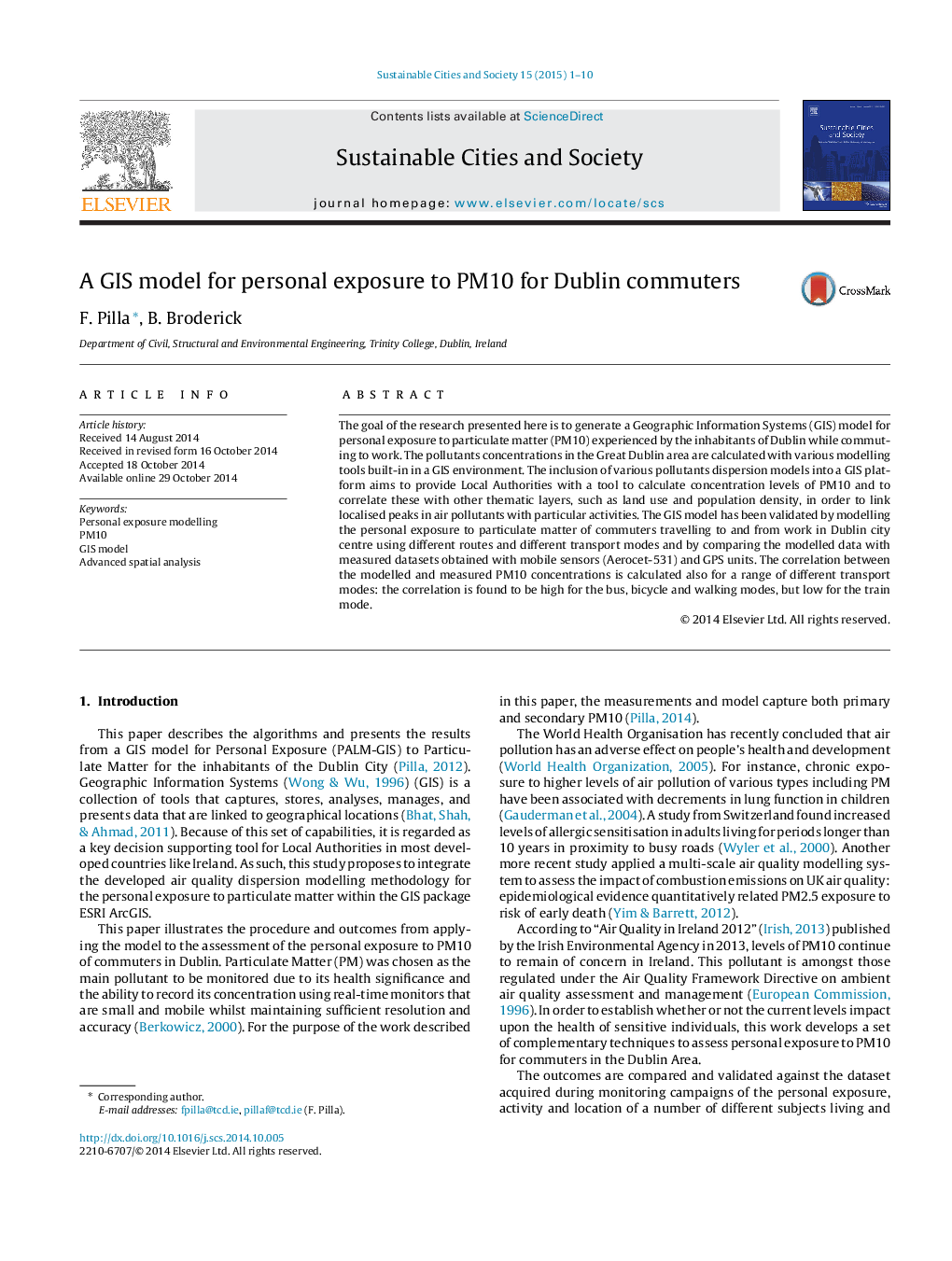| Article ID | Journal | Published Year | Pages | File Type |
|---|---|---|---|---|
| 6776402 | Sustainable Cities and Society | 2015 | 10 Pages |
Abstract
The goal of the research presented here is to generate a Geographic Information Systems (GIS) model for personal exposure to particulate matter (PM10) experienced by the inhabitants of Dublin while commuting to work. The pollutants concentrations in the Great Dublin area are calculated with various modelling tools built-in in a GIS environment. The inclusion of various pollutants dispersion models into a GIS platform aims to provide Local Authorities with a tool to calculate concentration levels of PM10 and to correlate these with other thematic layers, such as land use and population density, in order to link localised peaks in air pollutants with particular activities. The GIS model has been validated by modelling the personal exposure to particulate matter of commuters travelling to and from work in Dublin city centre using different routes and different transport modes and by comparing the modelled data with measured datasets obtained with mobile sensors (Aerocet-531) and GPS units. The correlation between the modelled and measured PM10 concentrations is calculated also for a range of different transport modes: the correlation is found to be high for the bus, bicycle and walking modes, but low for the train mode.
Related Topics
Physical Sciences and Engineering
Energy
Renewable Energy, Sustainability and the Environment
Authors
F. Pilla, B. Broderick,
